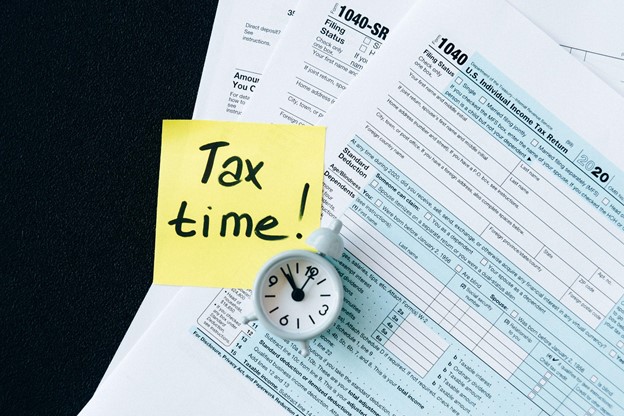Whether you are filing as a corporation, partnership, LLC, or individual, you can benefit from doing some tax planning now. You must do some tax savings strategies for businesses, like timing income and expenses, before the end of the tax year. But you can do others any time before you file your return. So, you still have time. The tax professionals at Hayes & Associates can advise you on various ways to reduce your tax bill for 2021.
Whether you are having a good year, rebounding from recent losses, or still struggling to get off the ground, if you make the right moves before December 31, you may be able to save a bundle on your taxes.
Defer your income
Income is taxed in the year it is received, but why pay tax today if you can tomorrow? It can be tough for employees to postpone wages and salary income. As long as it is standard for your company to pay year-end bonuses the following year, you may be able to defer this bonus into the next year.
Are you self-employed or do freelance work? You may have more leeway. Delaying billings until late December can ensure that you won’t receive payment until the next year.
You may also be able to defer income by taking capital gains in 2022 rather than 2021. It makes sense to defer income as long as you think you’ll be in the same or lower tax bracket next year. You don’t want to be hit with a bigger tax bill next year if additional income could push you into a higher tax bracket. If that is likely for you, consider accelerating income into 2021 so you can pay tax on it in a lower bracket sooner, rather than in a higher bracket later.
Take some last-minute tax deductions
Just as you may want to defer income into next year, you may want to lower your tax bill by accelerating deductions this year. For example, contributing to charity is a great way to get a deduction. And you control the timing.
For 2021, this amount is up to $600 per tax return for those filing married filing jointly and $300 for other filing statuses. In 2020 you could deduct up to $300 per tax return of qualified cash contributions if you took the standard deduction.
By donating appreciated stock or property rather than cash, you can supercharge the tax benefits of your generosity. Better yet, as long as you’ve owned the asset for more than one year, you get a double tax benefit from the donation: You can deduct the property’s market value on the date of the gift and avoid paying capital gains tax on the built-up appreciation.
You must have a receipt to back up any contribution, regardless of the amount. Other expenses you can accelerate include:
- an estimated state income tax bill due January 15
- a property tax bill due early next year
- or a doctor or hospital bill.
Don’t miss out on valuable tax deductions if you can itemize rather than claiming the standard deduction. According to the IRS, about 75% of taxpayers take the standard deduction but could be missing out on valuable tax deductions if they can itemize.
- If your qualifying expenses exceed the standard deduction, which in 2021 is $12,550 if you are single, or $25,100 if you’re married filing jointly, then you likely should maximize your deductions and itemize.
- Don’t worry about figuring out if you can itemize or should take the standard deduction. We will figure it out for you based on the information you provide to us about your deductible expenses.
Your year-end strategy should focus on bunching if you’re on the itemize-or-not borderline. In one year, you cram in as many deductible expenses as possible, using the tactics outlined above. The goal is to surpass the standard deduction amount and claim a larger write-off.
In alternating years, you skimp on deductible expenses to hold them below the standard deduction amount because you get credit for the full standard deduction regardless of how much you actually spend. In the lean years, year-end planning stresses pushing as many deductible expenses as possible into the following year when they’ll have more value.
Be aware of alternative minimum tax – Speeding up deductions could be a blunder if you’re subject to the alternative minimum tax
Sometimes accelerating tax deductions can cost you money… if you’re already in the alternative minimum tax (AMT) or if you inadvertently trigger it. The AMT is now increasingly affecting the middle class, originally designed to make sure wealthy people could not use legal deductions to drive down their tax bills. The AMT is figured separately from your regular tax liability and with different rules. You have to pay whichever tax bill is higher.
This is a year-end issue because certain expenses that are deductible under the regular rules—and therefore candidates for accelerated payments—are not deductible under the AMT. So, if you expect to be subject to the AMT in 2021, don’t pay the installments that are due in January 2022 in December 2021.
Contribute the maximum to retirement accounts
There is no better investment than tax-deferred retirement accounts. They can grow to a substantial sum because they compound over time free of taxes. Company-sponsored 401(k) plans may be the best deal because employers often match contributions.
Try to increase your 401(k) contribution so that you are putting in the maximum amount of money allowed ($19,500 for 2021, $26,000 if you are age 50 or over). If you can’t afford that much, try to contribute at least the amount that will be matched by employer contributions.
- You usually have until April 18, 2022, a filing deadline to make IRA contributions, but the sooner you get your money into the account, the sooner it has the potential to start to grow tax-deferred.
- Making deductible contributions also reduces your taxable income for the year.
- You can contribute a maximum of $6,000 to an IRA for 2021, plus an extra $1,000 if you are 50 or older. Use our IRA Calculator to see how much you can contribute.
If you are self-employed, a good retirement plan might be a Keogh plan. In order to achieve maximum flexibility with retirement plans, they must be established by December 31. If established properly, contributions may be made until the tax filing deadline (including extensions) for your 2021 return. The amount you can contribute depends on the type of Keogh plan you choose.
Check IRA distributions
You must start making regular minimum distributions from your traditional IRA by April 1 following the year in which you reach age 72 (70 1/2 if you reached 70 1/2 prior to January 1, 2020). Minimum distribution requirements were suspended for 2020 but they are once again required for 2021. Failing to take out enough triggers one of the most draconian of all IRS penalties:
- A 50% excise tax on the amount you should have withdrawn based on your age, your life expectancy, and the amount in the account at the beginning of the year.
- After that, annual withdrawals must be made by December 31 to avoid the penalty.
When you make withdrawals, consider asking your IRA custodian to withhold tax from the payment. Withholding is voluntary, and you set the amount, but opting for withholding may allow you to avoid the hassle of making quarterly estimated tax payments.
Remember, with Hayes & Associates, we will provide you with the resources you need to complete your 2021 taxes. Our professional team offers specialized expertise in a variety of professional service categories, and our team is eager to learn how we can help your business grow.




